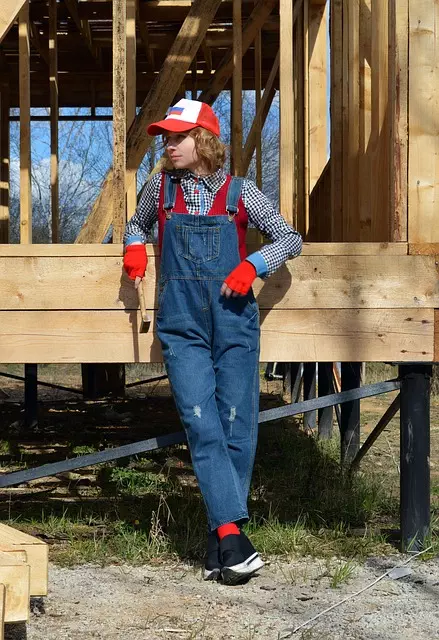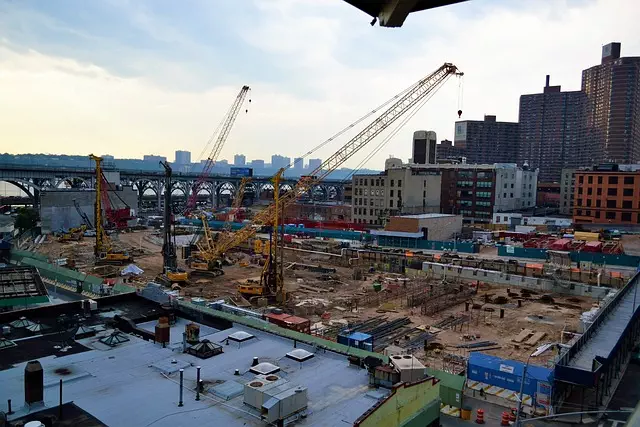Residential foundation repair, focusing on stem wall support, is crucial for structural integrity. Stem walls, vital for uneven terrain or older constructions, can settle unevenly over time due to factors like shifting soil or faulty construction. Advanced assessment techniques identify issues, and tailored repair methods stabilize the structure holistically. Timely repair prevents significant damage from common challenges like cracking, bowing walls, and soil settlement. Proper drainage systems are essential. Professionals use innovative techniques and specific materials for long-lasting repairs, considering both immediate and future costs. Regular upkeep, including debris removal, weeding, proper drainage, and inspections, helps maintain stem wall stability and longevity, avoiding costly repairs.
“Stem Wall Foundation Repair: Securing Your Home’s Solid Ground
This comprehensive guide delves into the intricate world of residential foundation repair, with a specific focus on stem wall foundations. We explore common issues that can compromise these structural elements, from settling to soil erosion. Learn about advanced techniques and materials that ensure long-lasting stability. Understanding soil conditions, choosing the right repairs, and budgeting effectively are crucial aspects covered here.
By mastering these topics, homeowners can maintain their properties’ stem wall foundations, preventing costly future repairs.”
Understanding Stem Wall Foundation Repair: A Comprehensive Overview

Stem Wall Foundation Repair is a specialized service that addresses the critical component of any residential structure—the foundation. Stem walls, typically found in homes built on uneven terrain or older constructions, are vertical supporting elements connected to the foundation. Over time, these stem walls can settle unevenly, leading to cracks, misalignments, and structural integrity issues.
Comprehensive repair involves assessing the extent of damage through non-invasive techniques. Once identified, problems like shifting soil, faulty construction, or water infiltration are addressed using advanced methods tailored to residential foundation repair. The goal is not just to fix visible symptoms but to stabilize the entire structure, ensuring longevity and safety for homeowners.
Common Issues with Residential Stem Wall Foundations

Residential stem wall foundations, while sturdy, are susceptible to several common issues over time. One of the most prevalent problems is cracking, which can occur due to soil settlement, uneven compaction, or excessive moisture. These cracks may start small but can expand and weaken the entire foundation structure if left unaddressed. Another frequent issue is bowing or leaning walls, often caused by poor initial construction, ground movement, or improper drainage around the property.
Settling or shifting of the soil beneath the stem wall can lead to gaps between the wall and the surrounding concrete, allowing water penetration and further compromising the foundation’s integrity. Moreover, improper drainage systems can exacerbate these problems by increasing moisture levels in the soil, which contributes to both cracking and settlement. Prompt identification and professional Residential Foundation Repair methods are crucial to mitigate these issues and ensure the longevity of residential structures.
The Role of Soil Conditions in Stem Wall Foundation Stability

The stability and integrity of a stem wall foundation heavily rely on the underlying soil conditions, which play a critical role in its long-term performance. Soil composition, compaction, and moisture content are key factors that influence how well a stem wall is supported. Loose or poorly compacted soil can lead to settlement issues, causing cracks and misalignments over time. For instance, expansive clay soils, common in many residential areas, have the potential to swell and contract with changing moisture levels, exerting pressure on the foundation walls. This can result in serious structural damage if not managed properly.
When conducting residential foundation repair, assessing soil conditions is essential. Professionals may employ techniques like soil sampling or ground penetration testing to gauge the stability of the site. Understanding these factors allows for the implementation of targeted solutions, such as deep foundations, soil stabilization techniques, or stem wall reinforcement methods, ensuring the longevity and stability of the structure.
Advanced Techniques for Stem Wall Foundation Repair and Stabilization

In the realm of residential foundation repair, stem wall stabilization is a complex yet crucial aspect. Advanced techniques have emerged to address this challenge effectively. One such method involves the use of specialized bolts and brackets to reinforce the connection between the stem wall and the footings, enhancing structural integrity. This approach ensures that even in cases where the wall has shifted or tilted, the foundation remains stable, preventing further damage.
Additionally, modern technology offers hydraulic jacking systems that allow for precise adjustments to misaligned stem walls. This method is particularly useful in situations where traditional shimming may not be effective. By hydraulically lifting and realigning the wall, professionals can restore the structural soundness of the foundation, ensuring longevity and peace of mind for homeowners. These advanced techniques are transforming residential foundation repair, making it more efficient and durable than ever before.
Choosing the Right Materials for Long-Lasting Repair Solutions

When it comes to stem wall foundation repair, selecting the appropriate materials is paramount for ensuring long-lasting solutions in residential foundation repair. The right choice can withstand environmental factors like extreme weather and earth movement, maintaining structural integrity over time. Concrete, for instance, is a popular pick due to its durability and strength, making it ideal for repairing and reinforcing stem walls.
For effective and lasting results, consider materials that offer both flexibility and resilience. Modern polymer-based products, such as injection mortars and foam, are designed to bond strongly with existing concrete while accommodating minor movements. This is crucial in preventing future damage, ensuring the stability of the foundation, and safeguarding the overall structural soundness of the home.
Cost Considerations: Budgeting for Stem Wall Foundation Repair

When budgeting for stem wall foundation repair, it’s essential to consider both the immediate costs and long-term expenses. The price can vary widely depending on several factors such as the extent of damage, local labor rates, material choices, and the complexity of the job. Simple repairs might only require re-grouting or mudjacking, which can be more affordable, ranging from a few hundred to a thousand dollars. However, severe cases may involve complete foundation replacement, costing tens of thousands of dollars.
Residential foundation repair is an investment in your home’s longevity and stability. It’s crucial to secure estimates from reputable contractors who can provide transparent pricing breakdowns. Understanding these costs upfront ensures you allocate sufficient funds and make informed decisions without any financial surprises during the repair process.
Maintaining Your Home's Stem Wall Foundation: Prevention Tips

The stem wall, a crucial component of many residential foundation systems, requires regular maintenance to ensure longevity and stability. Homeowners can take several proactive steps to prevent potential issues and avoid costly residential foundation repair in the future. One of the primary prevention tips is to keep the area around the stem wall clear of debris and overgrowth. Weeds and roots can penetrate cracks, causing further damage, so regular weeding and trimming are essential. Additionally, proper drainage is vital; ensure that rainfall or irrigation water flows away from the foundation, preventing moisture intrusion.
Inspecting the stem wall regularly for any signs of cracking, bulging, or settlement is another effective measure. Addressing these issues early can stop them from escalating. Sealant applications can fill small cracks and gaps, creating a protective barrier against moisture and insects. Homeowners should also be mindful of interior humidity levels, using dehumidifiers in damp areas to mitigate potential damage. Regular maintenance and quick action when problems arise are key to preserving the integrity of your home’s stem wall foundation and avoiding extensive residential foundation repair work.
